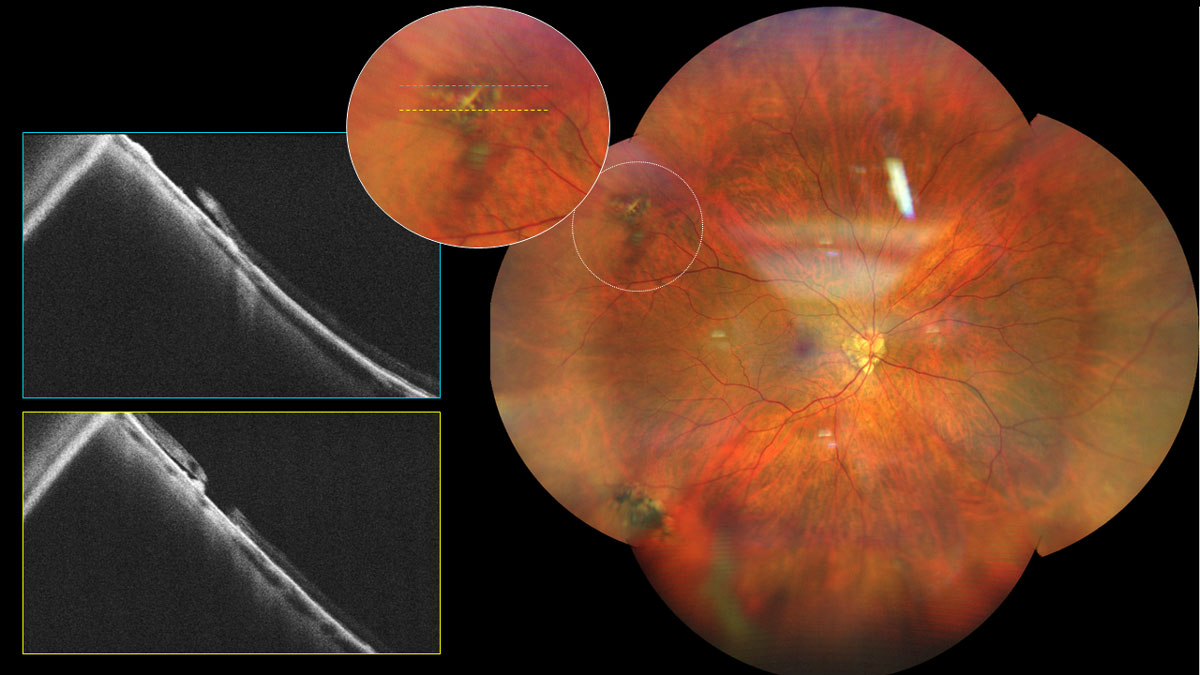 |
| As near work and myopia prevalence increases globally, so might the occurrence of retinal detachments and breaks in response, research suggests. Photo: Alia Cappellani, OD. Click image to enlarge. |
There is a well-established positive correlation between myopia level and the risk of retinal tear and detachment. Considering this, along with the association between myopia and education level, researchers recently sought to determine whether more retinal complications are reported in those with longer education. Their findings confirmed this was the case among a large cohort in Sweden.
The case-control registry study involved 10,268 individuals whose data were obtained from the Swedish National Board of Health and Welfare and the Swedish Central Bureau of Statistics (average age: 59 years for men, 60 years for women). Participants who had endured retinal detachments and/or breaks were matched with a control of the same age, sex and residing county. Next, the cohort was divided into seven groups based on education level, and researchers used conditional logistic regression to compare the groups.
In the total population, they reported that the odds ratio increased proportionally with a higher level of education. In their paper published in Acta Ophthalmologica, the study authors noted that “the odds ratio for the total population at the highest education level was 1.77 and increased to 2.00 when excluding individuals with diabetes.”
Interestingly, they noted that the 5,134 participants who developed retinal detachment and/or tear were predominantly male (72%), though the researchers clarify that a robust conclusion regarding an increased risk for men compared to women cannot be drawn based on this study alone.
“The causes for the differences between sexes are unclear but could possibly be explained by the smaller sample of females included in the study,” the authors wrote in their paper. “An additional explanation could be that biometric differences between men and women can explain a higher risk for the development of retinal complications.” They elaborate on this theory, noting that “earlier publications have reported biometric data in women with shorter axial length, shallower anterior chamber depth and steeper cornea, at the same refractive error, which likely contributes to a lower risk for the development of retinal detachment.”
The more absolute finding from this study, the researchers concluded, is that individuals with longer education—and, consequently, a higher myopia prevalence—appear to have a significantly increased risk for retinal complications in the form of retinal detachment and breaks. This trend may start to become more noticeable in clinical practice in light of the modern-day lifestyle and myopia’s increasing global presence, the team proposed.
“Since education is becoming increasingly important around the world, with more years and longer parts of the day spent indoors with extended time in near work activities, we might expect an increase in retinal complications in the years to come,” they cautioned in their paper.
While this study’s findings demonstrate an association between higher education and retinal complication risk, the team points out that further research is needed to better understand the relationship between educational length and retinal detachment, as well as investigate the sex-related differences observed in the present study.
Pettersson A, Bryngelsson IL, Makdoumi K. The level of education and the risk for retinal detachments and breaks: A registry-based case-control study. Acta Ophthalmologica. September 13, 2023. [Epub ahead of print]. |

